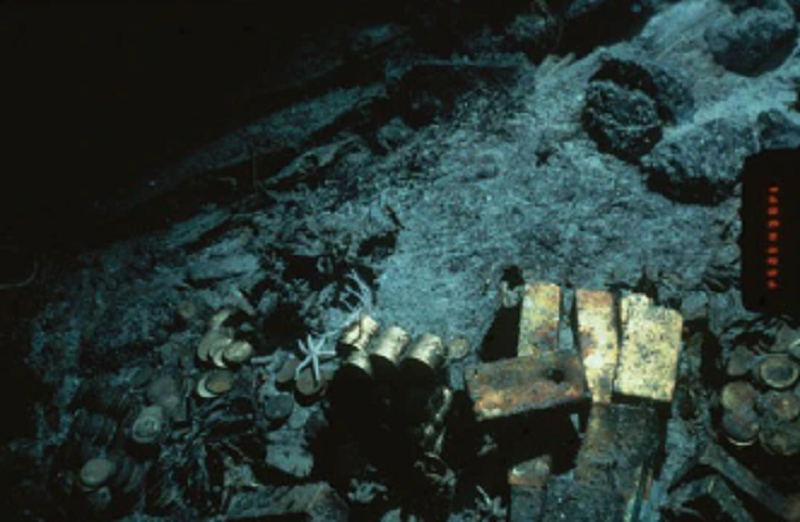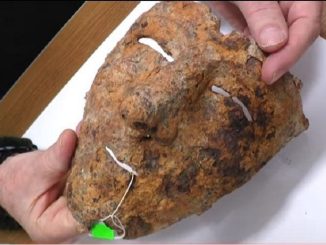After a bloody battle with four British ships, the San José ship with 62 guns and more than 500 sailors caught fire and sank to the bottom of the ocean.
In 1708, the Spanish warship San José, loaded with gold, silver, and emeralds, sank in a fierce battle with British warships in the Caribbean Sea.
Tragic outcome
After “sleeping” at the bottom of the sea for 310 years, the identity of San José was finally determined thanks to the analysis of the distinctive bronze cannons that sank with the ship. This ship carries assets estimated to be worth between 4-17 billion USD (at current prices), so it is also known as the “holy grail of shipwrecks”.
According to the Woods Hole Oceanographic Institute (WHOI) in the US, the above cannons still have decorative engravings of dolphins – based on images recorded by an underwater drone called REMUS 6000 while at a distance. 9.1 m wreck in 2015. WHOI has known these details since 2015 but recently affiliated agencies, including Maritime Archeology Consulting (MAC) and the Colombian government, have allow the research team to publish the above results.
Images of the cannons on the wreck of the San José were captured. Photo: AP
Before meeting a tragic fate, the San José was carrying treasure dug in Peru and this wealth was intended to be used to support Spain and France’s war against England. The San José and its treasure should have been escorted by a fleet of warships during most of the journey from America to Europe each year. But that year, the escorting warships were delayed and the Spanish commander, Admiral José Fernandez de Santillan, decided to sail anyway. It was a big mistake. After a bloody battle with four British ships, San José, along with 62 guns and a crew of more than 500 people, caught fire and sank to the bottom of the ocean.
Many treasure hunters and archaeologists tried to locate the ship but failed. It was not until November 27, 2015 that a group of international scientists discovered a shipwreck at a depth of 600 m off the coast of the Barú peninsula while working on the Colombian Navy research ship ARC Malpelo. At that time, no one had yet determined whether that was what was left of San José or not. WHOI immediately deployed REMUS 6000 into the sea to observe more closely. “REMUS 6000 is an ideal tool because it can carry out long-term missions in large ocean areas” – said Mike Purcell, WHOI engineer and expedition leader. What this device recorded showed that the wreck was partially covered by sediment. Decorative engravings on the cannons allowed Roger Dooley, a maritime archaeologist at MAC, to confirm that it was the wreck of the San José.
However, those who know the coordinates of the above treasure have not yet expanded their search scope, partly because San José is the subject of an international controversy: The amount of precious metals and emeralds lying below. Will the bottom of the Atlantic Ocean belong to the people of Colombia or Spain? While Colombia said that the wreck was found in its waters, Spain emphasized that the ship was flying the Spanish flag and most of the people on board were also citizens of this country.
Many disputes
The controversy over the treasure on the San José is not something new. Previously, people had witnessed the legal battle related to the gold ship S.S. Central America has been under the sea for more than 100 years.
This ship sank due to a storm while en route to New York on September 12, 1857, killing at least 425/477 people on board and 20 tons of gold sinking to the bottom of the sea nearly 260 km off the coast of South Carolina. According to the Telegraph (UK), this tragedy contributed to causing the world’s first financial crisis in 1857. “The S.S. Central America is one of the greatest shipwreck stories of all time.” “- Mr. Greg Stemm, CEO of Odyssey Marine Exploration Company (USA), commented to Fox News channel (USA).
Gold coins and bars were found at the wreck of the S.S. Central America in 1989 Photo: AP
However, the sinking of the ship was quickly forgotten due to the outbreak of the American Civil War a few years later. In 1988, a young maritime expert named Thomas Thompson found the location of the wreck and recovered 2 tons of gold (worth about 76 million USD today). However, the investors who helped fund the $13 million expedition later accused Mr. Thompson of not giving them their share and absconding with hundreds of gold coins. Investors “hunted” Mr. Thompson for more than 2 and a half years and he was finally arrested by authorities in 2015. This captain is still behind bars because he refused to disclose the amount of money he was hiding. negative credit.
In 2014, Odyssey Marine Exploration Company continued to excavate the above treasure on behalf of the plaintiffs in the lawsuit. As a result, 3,100 gold coins, more than 10,000 silver coins, 3,100 gold bars and gold jewelry were brought ashore.
Another well-known war involves the possession of the wrecks of two ships, Nuestra Senora de Atocha and Santa Margarita, which sank in 1622 in a storm near what is now the Florida Keys – USA. In 1985, treasure hunter Mel Fisher discovered these two ships, leading to a legal dispute over the right to salvage the estimated $450 million worth of treasure on the Nuestra Senora de Atocha.
The case was then brought to the US Supreme Court. Mr. Fisher’s lawyer convinced the judges that his client was eligible to enjoy ownership of what he discovered. Mr. Fisher’s legal victory led the US Congress to pass the Abandoned Shipwrecks Act in 1987, which allowed states to own shipwrecks found in their waters.




